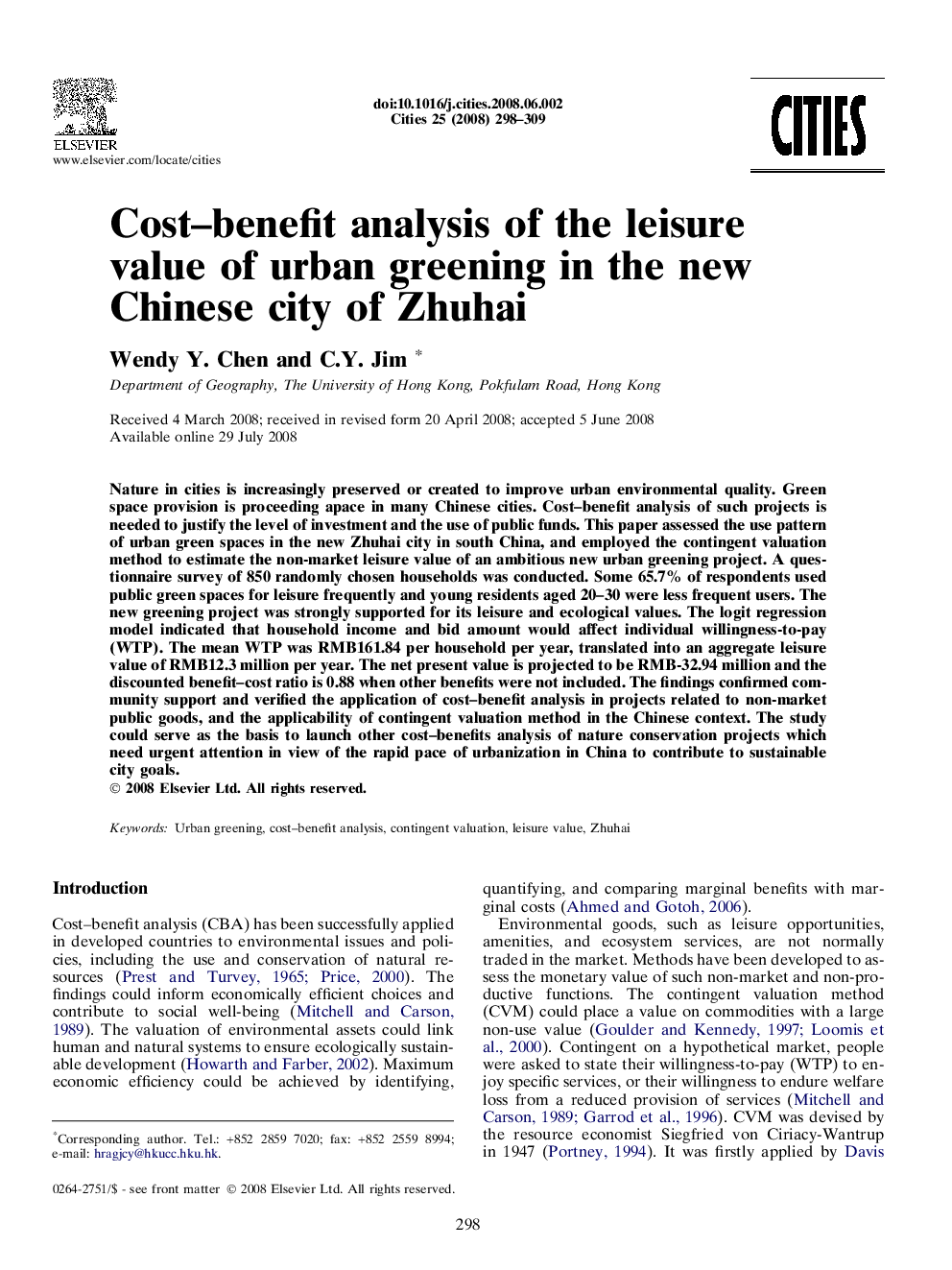| Article ID | Journal | Published Year | Pages | File Type |
|---|---|---|---|---|
| 1008934 | Cities | 2008 | 12 Pages |
Nature in cities is increasingly preserved or created to improve urban environmental quality. Green space provision is proceeding apace in many Chinese cities. Cost–benefit analysis of such projects is needed to justify the level of investment and the use of public funds. This paper assessed the use pattern of urban green spaces in the new Zhuhai city in south China, and employed the contingent valuation method to estimate the non-market leisure value of an ambitious new urban greening project. A questionnaire survey of 850 randomly chosen households was conducted. Some 65.7% of respondents used public green spaces for leisure frequently and young residents aged 20–30 were less frequent users. The new greening project was strongly supported for its leisure and ecological values. The logit regression model indicated that household income and bid amount would affect individual willingness-to-pay (WTP). The mean WTP was RMB161.84 per household per year, translated into an aggregate leisure value of RMB12.3 million per year. The net present value is projected to be RMB-32.94 million and the discounted benefit–cost ratio is 0.88 when other benefits were not included. The findings confirmed community support and verified the application of cost–benefit analysis in projects related to non-market public goods, and the applicability of contingent valuation method in the Chinese context. The study could serve as the basis to launch other cost–benefits analysis of nature conservation projects which need urgent attention in view of the rapid pace of urbanization in China to contribute to sustainable city goals.
